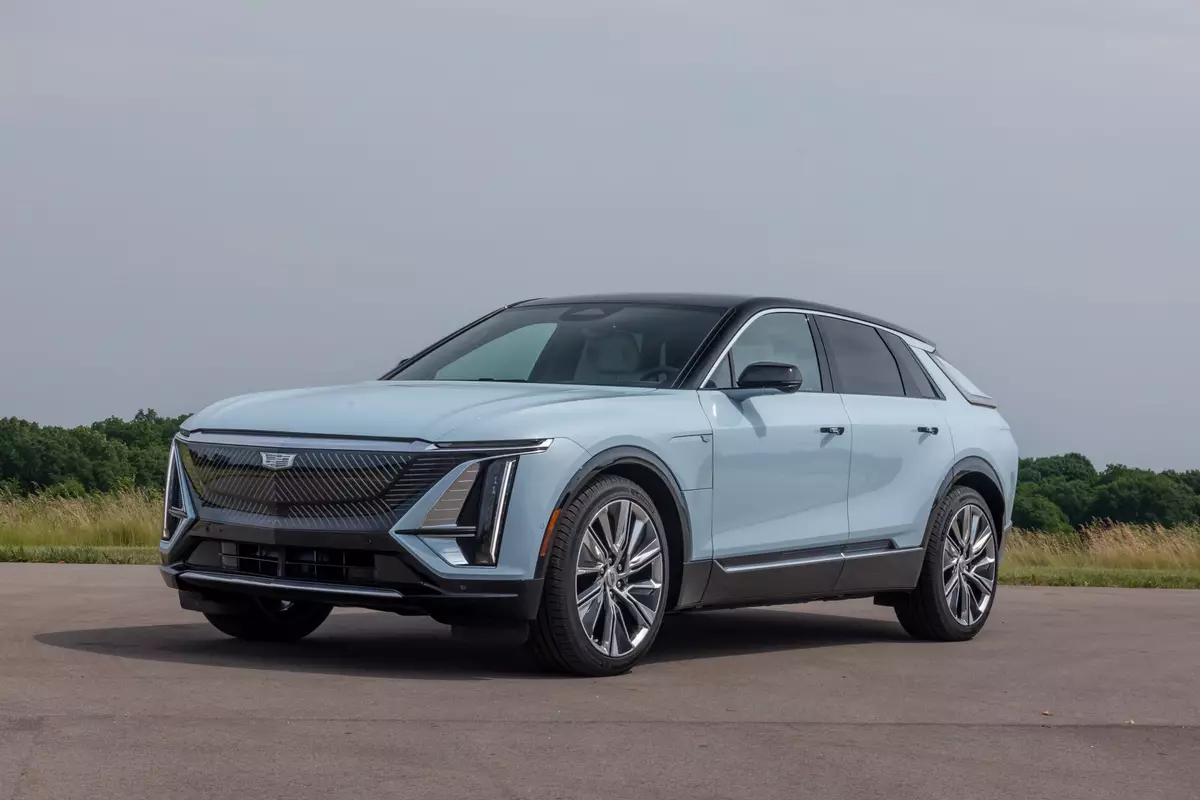Cincinnati.com's view
When you have a segment-leader, you have to think hard about how to follow the act. Such excogitation has brought us the all-new Lexus ES 300, and it’s obvious the designers’ little grey cells took a pounding.
Now that it has such a sporty mid-range offering as the rear-drive IS 300, the Toyota luxury arm has decided to emphasize the luxury feel of its midsize front-driver, supported by an awesome amount of obliquely evocative commercials. The ES 300 would be a shameless knockoff if the exemplar weren’t its own big brother, the LS 430. Any resemblance is purely deliberate, as the company positions the smaller car as a foretaste of what awaits when those stock options become valuable again.
The reworked ES 300 has a good shot at retaining its title as best-selling low-end luxury sedan, although the direct competition can only be described as formidable. As a midsize sedan in the $30K-$40K ballpark, ES 300 has to persuade you to take it home rather than an Acura TL, Audi A4, BMW 330i, Chrysler 300M, Infiniti I35, Jaguar X Type, Lincoln LS or Mercedes-Benz C Class, to name but a few. Gee, what an awful choice to have to make. Pity the well-heeled.
You want a straight-from-the-shoulder way to cut through the haze? You’ve come to the right place. If you’re into driving as a sometimes pleasurable activity in itself, almost any of the competitors would serve you better.
If you want the feel, and perhaps the prestige, of a big-time luxury car on the cheap (relatively speaking), then maybe you’re what Lexus is aiming for.
A Lexus executive, Denny Clements, is quoted as saying it aims for the customer to whom “a car is a conveyance, not a form of entertainment . . . which conveys to onlookers that (the owner has) achieved a certain level of success.” Car as validator, see, a venerable American tradition.
Well, the ES 300 is well-equipped to do that job, but it may take a couple of dips into the options bin.
Naturally it comes with a heavy equipment load, but there are a few things you may find irresistible, like an “adaptive” suspension (more on this later), chromed wheels (to show that you have much more money than sense), heated seats, high intensity discharge headlamps, leather seating, navigation system and a vehicle stability control system. Do all those, as the people who ordered the tester did, and you’ll be a few grains of Beluga caviar away from $40,000.
Lexus is obviously trying to make the car look affordable, at a base price of $31,305, and it is indeed a very comfortable ride in that condition. But if you’re talking luxury, I would think at least heated leather seats and stability control would be part of the bundle, maybe even the potent headlamps.
Notable inclusions on the base car include full-length side curtain air bags in addition to the side-firing bags built into the front seats, dual-zone microfiltered climate control, a premium sound system, power moonroof, trip computer, auto-dimming mirrors, real walnut trim bits (in a peculiar cherry-red hue), and trip computer.
The ES 300, 2002 version, is two inches longer and more than two inches higher than its forebear, inching it closer to EPA’s midsize territory with a cabin volume of 96.4 cubic feet. (It has much in common with its more unassuming half-brother, the Toyota Camry.)
The exterior styling of the ES 300 conveys a sense of luxury and solidity with a bit of sporty flair – note the hood creases, the windswept look of the headlamps and the integrated spoiler on the decklid – and the car manages to look more massive than it is, which is exactly what is desired in this league. It is about 2 inches longer than the Camry, though sharing a wheelbase.
The ES 300 engine is somewhat disappointing, given its sophistication. Quite similar to the Camry’s, here the 3-liter, 24-valve, 60-degree six makes 210 hp (@5,800) and 220 foot-pounds of torque (@4,400), about 8 percent more than what’s claimed for Camry. (Lexus is being a bit sneaky – they the car, despite its 10.5:1 compression ratio, uses regular fuel. Then in the fine print they tell us 91-octane will provide improved performance. That alone would explain much of the improvement in output vs. Camry.)
It falls short in straight-line performance (I could not crack 8 seconds in the 0-60 test), but that, too, I suspect, is a design decision. Eight seconds is respectable for a luxury car, whose owners want quiet assurance, rather than rubber-liquefying verve.
The five-speed automatic transmission is weighted toward the top end, with both 4 and 5 being overdrive ratios. Consequently, cruising at 65 is a very relaxed proposition, especially when you factor in the noise-limiting contribution of an extremely low (0.28) coefficient of drag. At all speeds, the cabin is hushed.
EPA estimates are 21 mpg city, 29 highway, and I was pleased to record 24.4 on premium gas, in an equal mix of freeway flying and back roads bashing.
The transmission shifted quickly and unobtrusively, and though it did adapt to my demands for high rpms, it wasn’t quite so apt at downshifting under off-throttle conditions, and bobbled a bit on forced downshifts.
I thought handling seemed terribly vague. The car did what was asked of it, even when the demands were unreasonable, but always left me surprised that it did so well because of the lack of feedback. On the plus side, it did manage to hold a course at freeway speeds without undue correction, even when the surface was less than perfect.
The tester had the optional “adaptive” suspension, which essentially gives the driver a switch by which he can set varying degrees of firmness. I thought the default or normal setting was fine – the increased ride harshness in other settings didn’t turn it into a sports sedan.
The vehicle skid control option is well worth having. Like others of its type, it supplies selective braking to an errant wheel when a driver is taking a curve too fast for conditions. It’s seamless and effective. It includes “brake assist,” another valuable safety enhancement. If the brake sensor detects an unusually rapid press of the pedal, it electronically invokes maximum braking force faster than it would otherwise be achieved, receding when the driver lets up on the pedal. With its massive front and rear discs, antilock-assisted, the ES 300 can pull off very high-rate decelerations time after time with negligible fade.
The standard “premium” audio system was commendable in clarity, average in tuner sensitivity. A big-bucks Mark Levinson unit (a name revered in audiophile circles) is available. The navigation system – an amusing, albeit extravagant toy – is one of the best. It’s DVD-based, so the entire continental U.S. fits on one disc, down to individual street level – and its microprocessor has been hopped up to provide very rapid updates as you motor along. Of course you must promise, via tocuhscreen, not to mess with it while driving – copilots have all the fun – but I did peek from time to time and at the most magnified setting could see the vehicle’s progress in real time.
Neither the federales nor the insurance folks have smashed a new-generation ES 300 yet, though they say they plan to. Based on the predecessor’s ratings, I would speculate the new one will win high marks.
Total price of the test car was $39,855. Freight was $575; the adaptive suspension, $620; chromed wheels, $1,700; heated seats, $440; high-intensity headlamps, $640; navigation package, including leather memory seats, $3,960; a rear power sunshade, $210; vehicle stability control, $650, and a wood-and-leather-wrapped steering wheel, $330. Payments on that very one would be $808, assuming 20 percent down, 10 percent interest and 48 payments. The analytical firm of Edmonds indicates ES 300s are going for a slight discount from sticker – you can probably shave a couple of grand if you build one up toward the $40K mark.
Latest news



